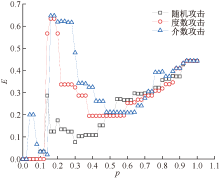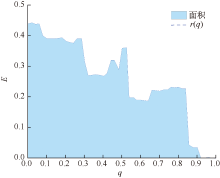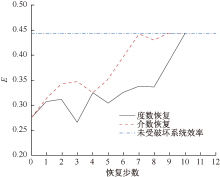| [1] |
周方, 赵伟, 胡翔奎, 等. 基于关键基础设施耦合关系的城市韧性评价研究[J]. 安全与环境学报, 2023, 23(4):1014-1021.
|
|
ZHOU Fang, ZHAO Wei, HU Xiangkui, et al. Research on the urban resilience assessment for critical infrastructure interdependency[J]. Journal of Safety and Environment, 2023, 23(4):1014-1021.
|
| [2] |
刘昭阁, 李向阳, 朱晓寒. 城市关键基础设施网络脆弱性关联分析的知识本体配置[J]. 系统工程理论与实践, 2023, 43(1):222-233.
doi: 10.12011/SETP2022-0045
|
|
LIU Zhaoge, LI Xiangyang, ZHU Xiaohan. Knowledge ontology configuration for vulnerability association analysis of urban critical infrastructure networks[J]. Systems Engineering-Theory & Practice, 2023, 43 (1):222-233.
|
| [3] |
赵辰. 城市关联基础设施系统网络建模及韧性优化[D]. 北京: 清华大学, 2018.
|
|
ZHAO Chen. Urban interdependent infrastructure system network modeling and resilience analysis[D]. Beijing: Tsinghua University, 2018.
|
| [4] |
SHIMA M, KATHERINE B, BABAK A. Decentralized resource allocation for interdependent infrastructures resilience:a cooperative game approach[J]. International Transactions in Operational Research, 2021, 28(6):3394-3415.
|
| [5] |
周方. 城市多层关键基础设施耦合网络级联失效研究[D]. 大连: 大连理工大学, 2019.
|
|
ZHOU Fang. Cascading failures of interdependent multilayer network for urban critical infrastructures[D]. Dalian: Dalian University of Technology, 2019.
|
| [6] |
AMIRHOSSEIN F. Multilayer cellular learning automata:a computational model to solve multilayer infrastructure problems with its application in community detection for multilayer networks[J]. Journal of Computational Science, 2022, 61:DOI: 10.1016/j.jocs.2022.101683.
|
| [7] |
毛丁, 王芃, 倪龙. 供热及其关联基础设施网络脆弱性研究综述[J]. 中国安全科学学报, 2021, 31(11):155-162.
doi: 10.16265/j.cnki.issn 1003-3033.2021.11.022
|
|
MAO Ding, WANG Peng, NI Long. Research review on vulnerability of district heating system and its interdependent infrastructure network[J]. China Safety Science Journal, 2021, 31(11):155-162.
doi: 10.16265/j.cnki.issn 1003-3033.2021.11.022
|
| [8] |
杨景峰, 朱大鹏, 赵瑞琳. 城市轨道交通网络特性与级联失效鲁棒性分析[J]. 计算机工程与应用, 2022, 58(7):250-258.
doi: 10.3778/j.issn.1002-8331.2105-0157
|
|
YANG Jingfeng, ZHU Dapeng, ZHAO Ruilin. Analysis on characteristics of urban rail transit network and robustness of cascading failure[J]. Computer Engineering and Applications, 2022, 58(7):250-258.
doi: 10.3778/j.issn.1002-8331.2105-0157
|
| [9] |
霍非舟, 梅依云, 吕伟, 等. 考虑拥堵指数的城市群复杂交通网络级联失效模型[J]. 公路交通科技, 2022, 39(10):162-170,190.
doi: 10.3969/j.issn.1002-0268.2022.10.020
|
|
HUO Feizhou, MEI Yiyun, LYU Wei, et al. Cascading failure model of complex transport network in urban agglomeration considering congestion index[J]. Journal of Highway and Transportation Research and Development, 2022, 39(10):162-170,190.
|
| [10] |
RINALDI S M, PEERENBOOM J P, KELLY T K. Identifying, understanding, and analyzing critical infrastructure interdependencies[J]. IEEE Control Systems Magazine, 2001, 21(6):11-25.
|
| [11] |
LIU Xueming, PAN Linqiang, STANLEY H E, et al. Controllability of giant connected components in a directed network[J]. Physical Review E, 2017, 95(4):DOI: 10.1103/physreve.95.042318.
|
| [12] |
周冬玥, 胡福年, 陈军. 基于复杂网络的电力系统鲁棒性分析[J]. 电力系统保护与控制, 2021, 49(1):72-80.
|
|
ZHOU Dongyue, HU Funian, CHEN Jun. Robustness analysis of power system based on a complex network[J]. Power System Protection and Control, 2021, 49(1):72-80.
|
| [13] |
唐少虎, 朱伟, 程光, 等. 暴雨内涝下城市道路交通系统安全韧性评估[J]. 中国安全科学学报, 2022, 32(7):143-150.
doi: 10.16265/j.cnki.issn1003-3033.2022.07.1391
|
|
TANG Shaohu, ZHU Wei, CHENG Guang, et al. Safety resilience assessment of urban road traffic system under rainstorm waterlogging[J]. China Safety Science Journal, 2022, 32(7):143-150.
doi: 10.16265/j.cnki.issn1003-3033.2022.07.1391
|
| [14] |
CHEN Changkun, ZHAO Dongyue, HE Fan, et al. A comprehensive multi-hazard risk assessment model for an urban agglomeration with multiple factors[J]. Journal of Safety Science and Resilience, 2023, 4(1):43-51.
|
| [15] |
张雯婕, 胡军红, 闻成维, 等. 考虑网络韧性的城市轨道交通故障恢复研究[J]. 中国安全科学学报, 2023, 33(4):179-186.
doi: 10.16265/j.cnki.issn1003-3033.2023.04.1770
|
|
ZHANG Wenjie, HU Junhong, WEN Chengwei, et al. Research on urban rail failure recovery considering network resilience[J]. China Safety Science Journal, 2023, 33(4):179-186.
doi: 10.16265/j.cnki.issn1003-3033.2023.04.1770
|




















